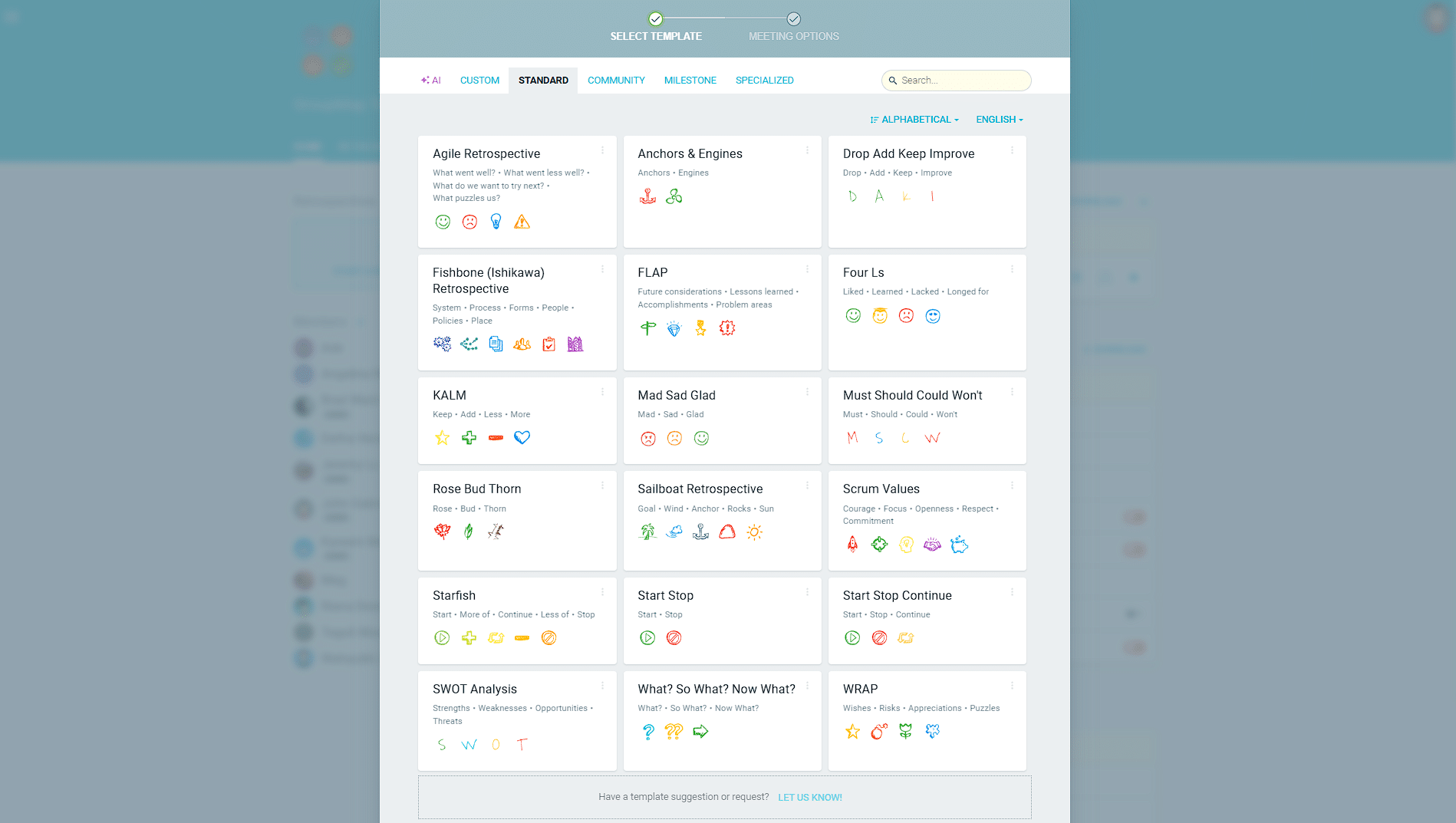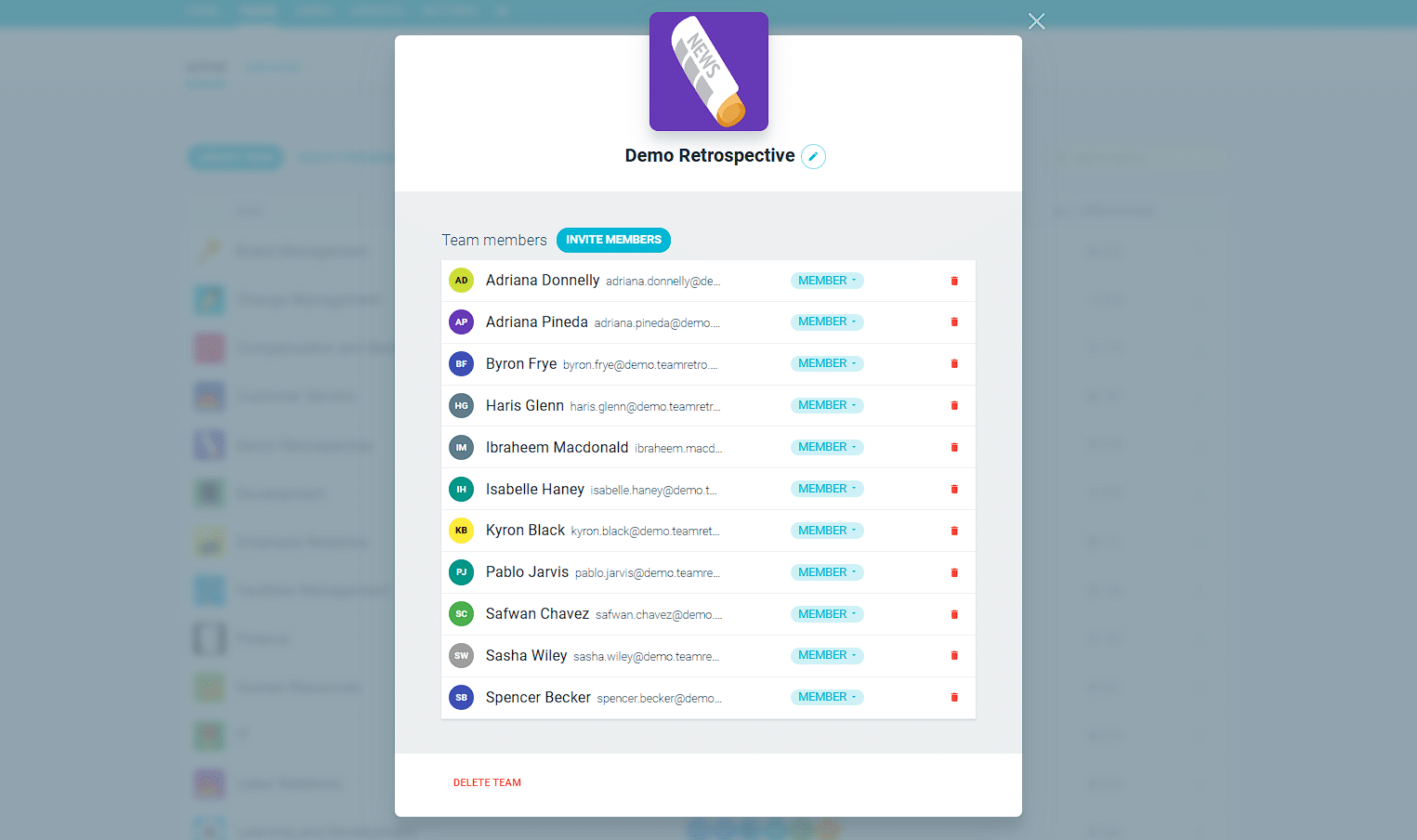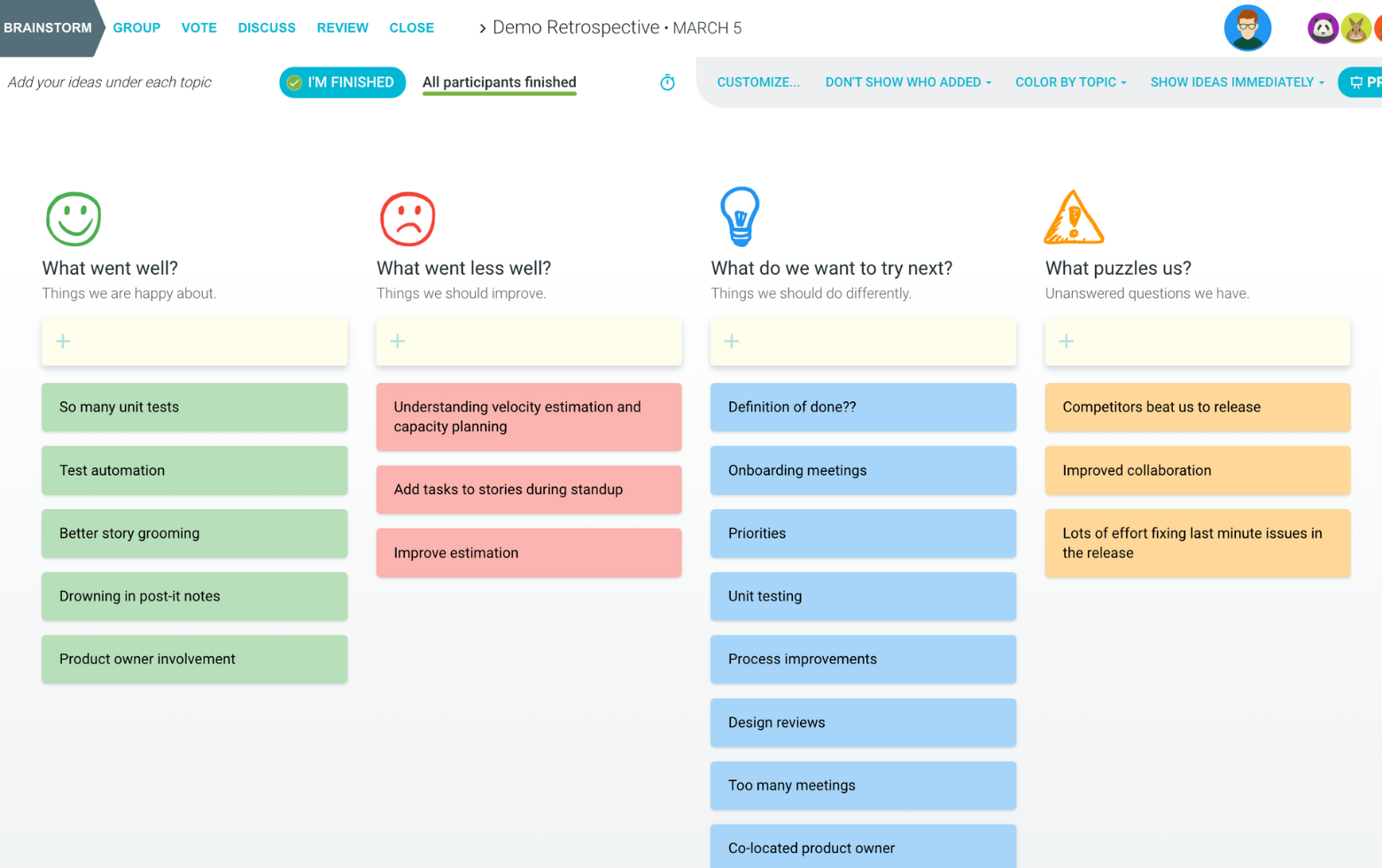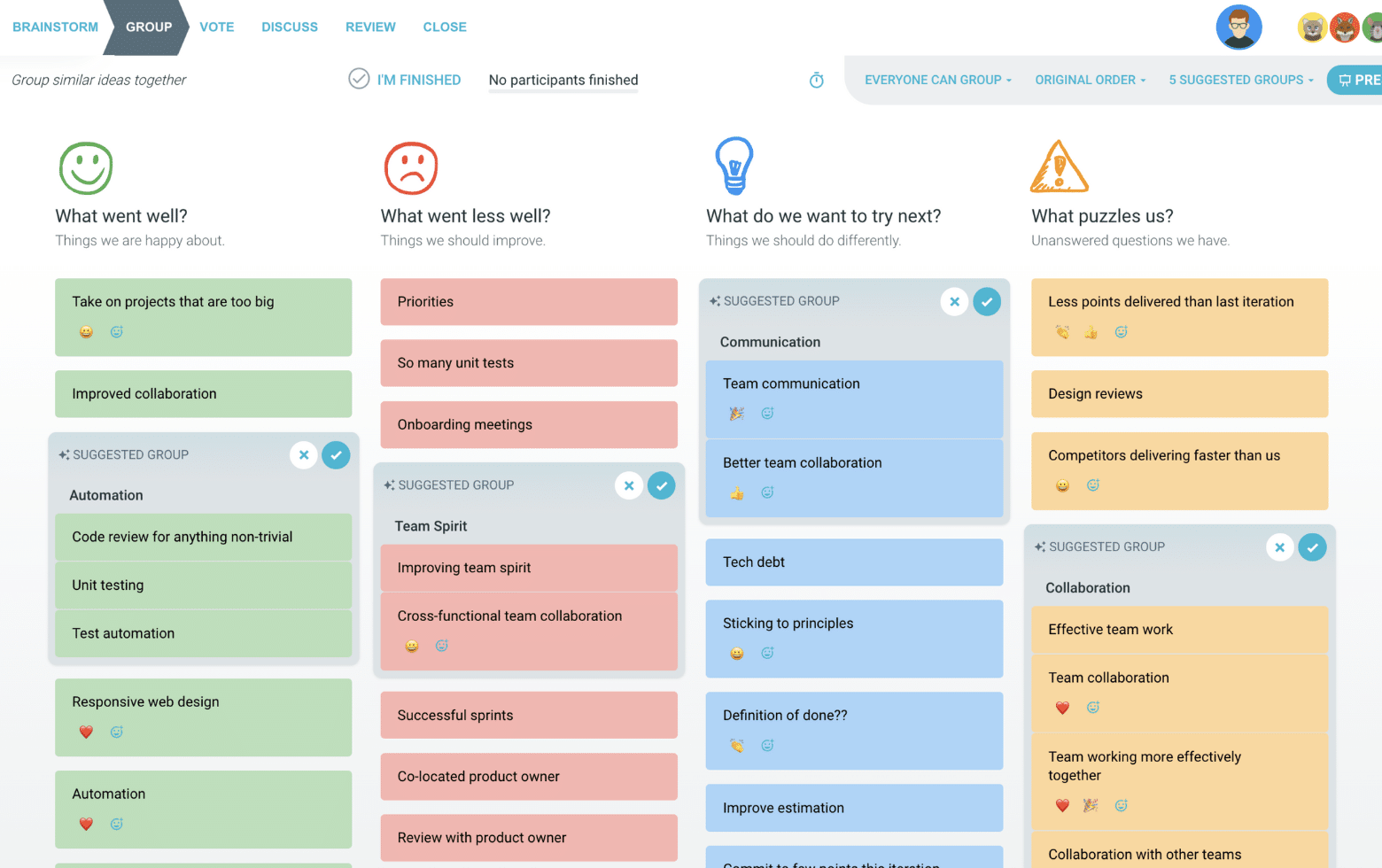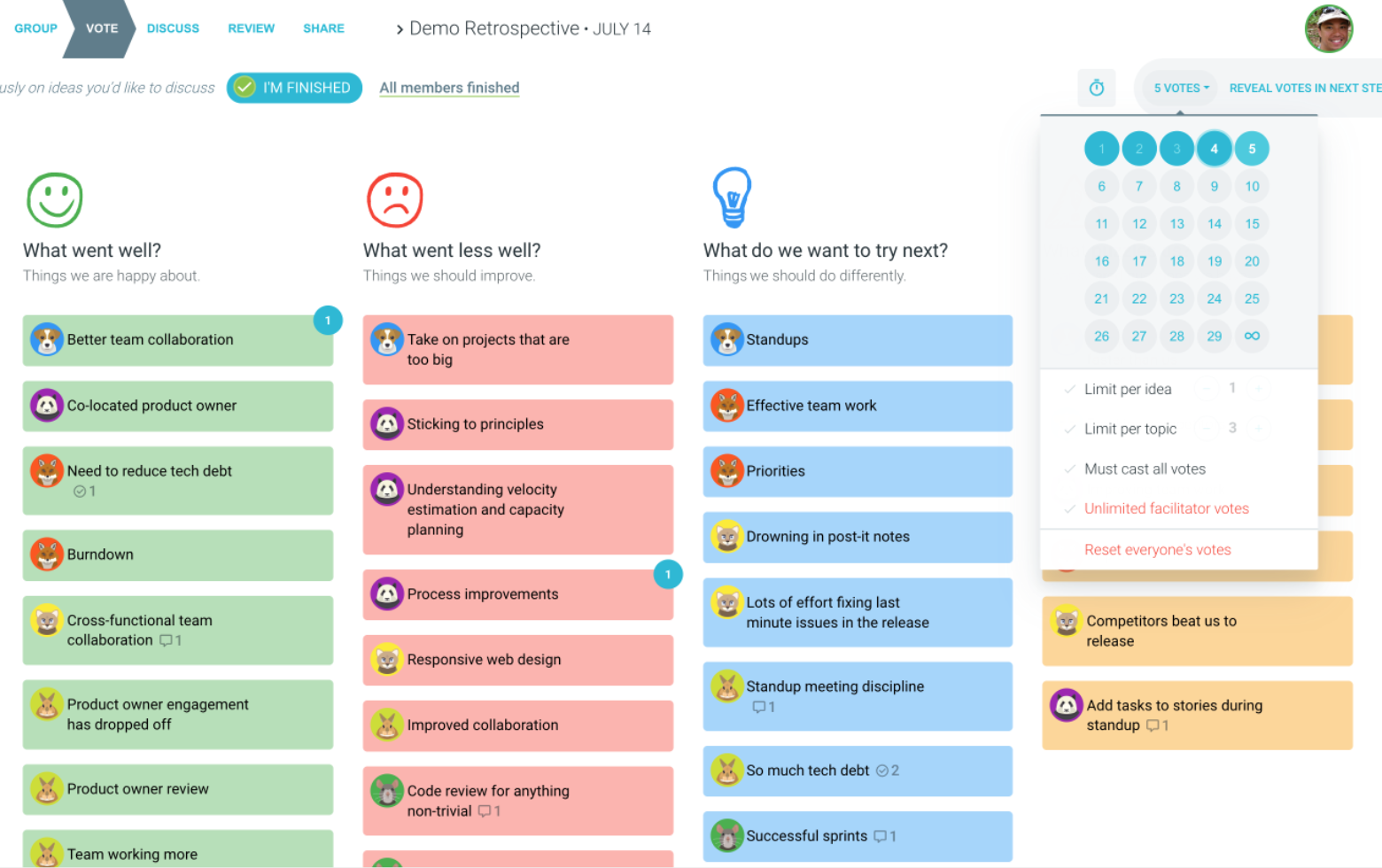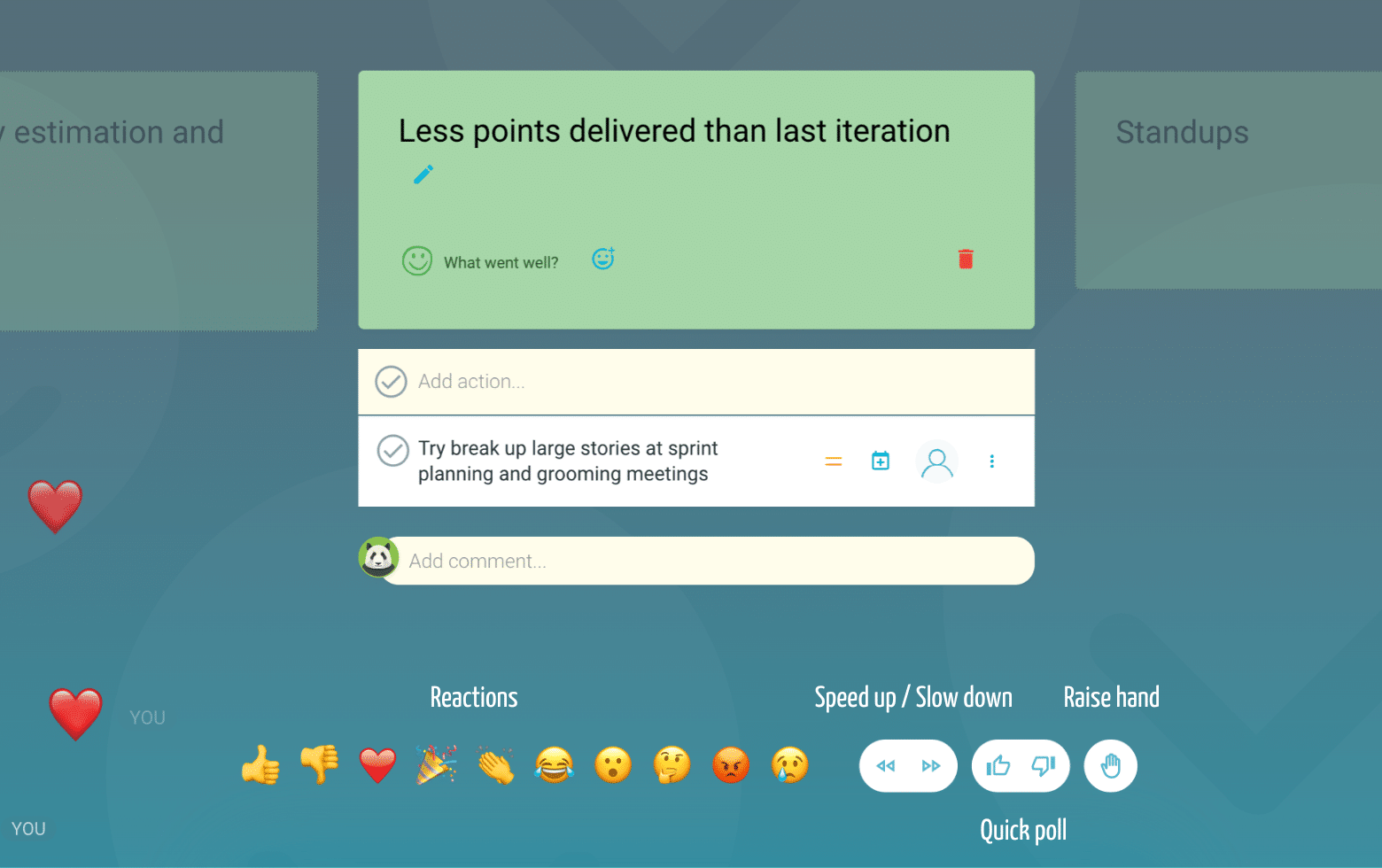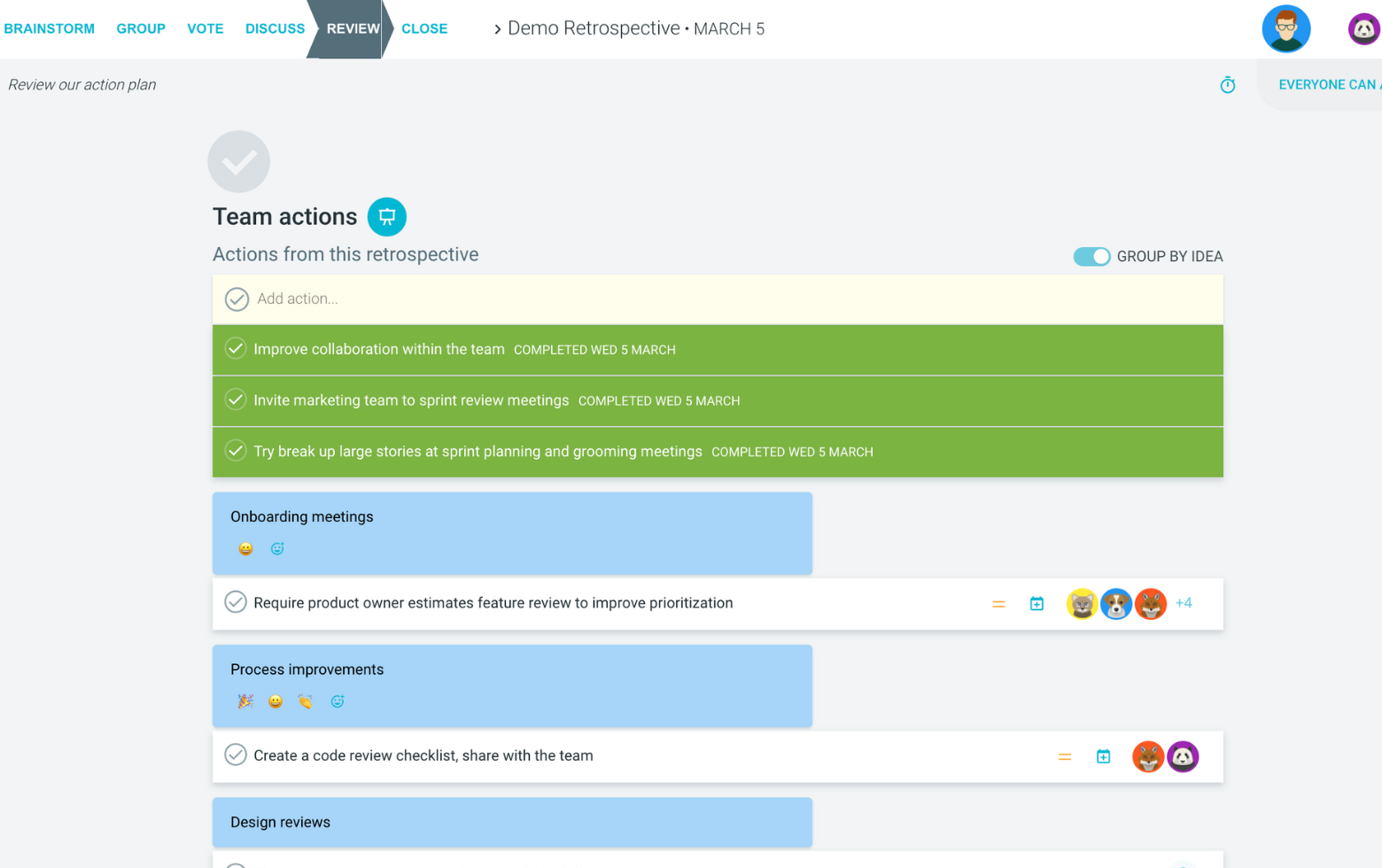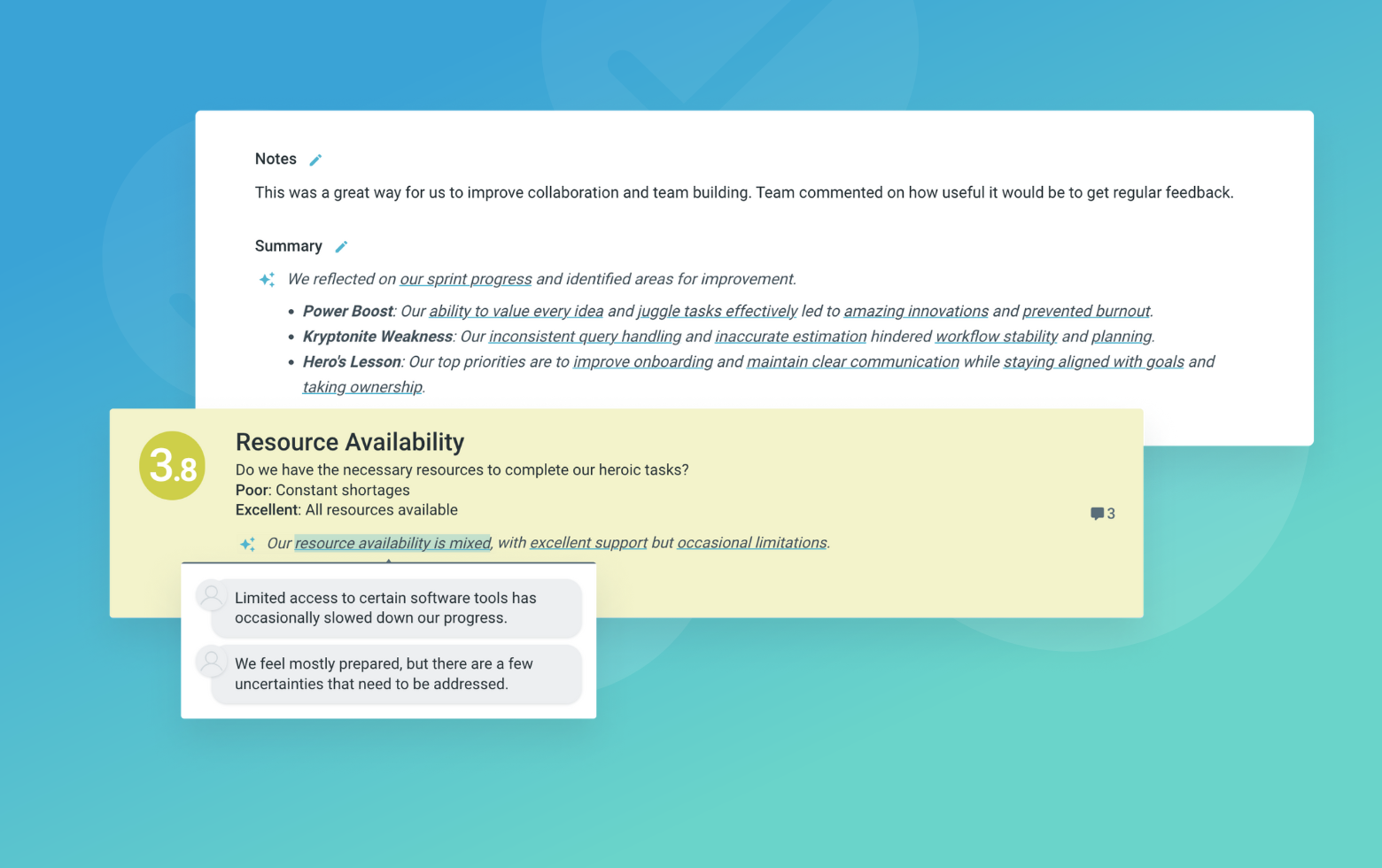The Bug Fixing Retrospective is a focused meeting for agile teams to review recent bugs, identify root causes, and implement preventative measures. By analyzing defects in a structured way, teams can improve code quality, enhance testing practices, and streamline development workflows.
This retrospective leverages the collective insights of the team to foster a blameless culture of continuous learning. It encourages open discussion around technical debt, coding standards, and quality assurance processes. The goal is to emerge with actionable steps to reduce bugs and rework in future sprints.
Originally outlined in the book 'Agile Retrospectives' by Esther Derby and Diana Larsen, this activity adapts the classic '5 Whys' technique to software development. It provides a systematic approach to uncovering the underlying reasons behind defects and prioritizing improvements.
What is The Bug Fixing Retrospective
Recent Bugs
What significant bugs were encountered during the last sprint?
List out major defects, focusing on high-impact or recurring issues.
Root Causes
What were the underlying reasons behind each major bug?
Use the '5 Whys' approach to dig deeper into process failures.
Preventative Actions
What steps can we take to prevent similar bugs going forward?
Focus on process improvements, best practices, and quality measures.
Quality Targets
What metrics or goals should we set to measure improvement?
Discuss quantifiable targets related to defects, tech debt, and quality.
Our Learnings
What key lessons did we take away from this retrospective?
Summarize the main insights and action items from the discussion.
Suggested Icebreaker Questions
- If you could eliminate one bug from existence, which would it be and why?
- Share a funny or embarrassing experience involving a bug you've encountered.
Ideas and Tips for Your Retrospective Meeting
- Foster a blameless environment focused on learning, not finger-pointing.
- Involve cross-functional team members like QA, DevOps, and product owners for diverse perspectives.
- Prioritize high-impact or frequently occurring bugs over minor or one-off issues.
- Dig deep using the '5 Whys' approach to uncover root causes beyond surface-level symptoms.
- Assign clear owners and deadlines for all preventative actions and quality targets.
- Follow up in subsequent retrospectives to review progress on committed improvements.
.
How to Run Effective Meetings with TeamRetro
Start Your Session in a Click
Log into TeamRetro and choose your template. Customise questions and the workflow to create your perfect retro for your team.
Create Your Team Easily – No Separate Accounts Needed
Brainstorm Individually – Free From Bias
Smart Grouping for Faster Insights
Fair, Flexible, and Fast Voting
Engage, React, and Capture Key Insights
Walk your team through ideas one by one with Presentation Mode. Stay in sync, spark real-time discussions, and capture feedback with comments, live reactions, and polls—all in one place.
Turn Ideas Into Action
Propose next steps with team buy-in, get AI-powered action suggestions, and keep everything in one place. Committed actions sync to your personal dashboard and integrate with your workflow tools—keeping you on track.
Save, Share, and Stay on Track
Get quick AI-powered summaries, add facilitator notes, and store retrospectives in your library for easy access. Schedule your next session and track published actions to keep your team accountable at the next retro.
Turn Team Data into Actionable Insights
Uncover trends, common themes, and key engagement metrics at a glance. Track sentiment shifts, analyze conversations, and monitor completed actions to drive continuous improvement.
